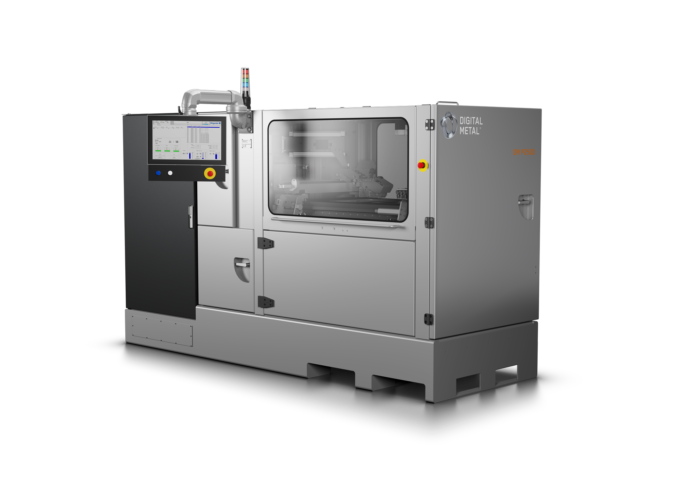Acknowledged for their ability to withstand extreme conditions, superalloys are increasingly becoming materials of choice for some applications requiring the use of metal additive manufacturing. Most of these applications are observed in the aerospace, automotive and industrial segments. To address this demand, Digital Metal®unveils today two 3D printable superalloys materials. Named DM 247 and DM 625, those materials can be processed on the company’s binder jetting technology.
Digital Metal®’s advancements are remarkable in the industry. Following its introduction into the North American market, the company’s DM P2500 Metal AM system has been certified by UL. Its technology is suitable for printing superalloys, including non-weldable grades, with near full density. As a reminder, the 3D printing system spreads a layer of metal powder that is 0.042-mm thick. The binder is thereafter jetted according to the part’s geometry.
The release of these materials will enable the Sweden-based company to provide stronger and diversified offerings in terms of applications. The main difference between the two alloys is that the DM 247 is based on the non-weldable MAR M247. It enables applications for turbine blades as well as applications that require very high temperatures. As for the DM 625, it is an Inconel 625-grade material. The material can be used for seawater applications and chemical processing equipment, not to mention that the nuclear industry and the aerospace industry can also leverage its potential.
“We have been receiving qualified requests for these materials from various large companies”, says Ralf Carlström, General Manager at Digital Metal. “Many producers within the aerospace and automotive business have long been anticipating high-quality superalloys that are suitable for 3D printing. Now we can offer them the perfect combination – our unique binder jetting technology and superalloys that are specially developed for our printers.”
In the additive manufacturing industry, notice is to be made that manufacturers of 3D Printing systems do not limit their operations to the development of 3D Printing systems. It becomes crucial for them to be able to leverage a certain expertise in materials to develop AM materials that can perfectly be processed on their systems. However, as far as material producers are concerned, they need collaborations to deliver materials that can be processed on 3D printing systems of the industry. For now, very few of them have been able to develop both materials and their own system.
Digital Metal has recently participated in the dossier of 3D ADEPT Mag’s latest issue. Discover the company’s expertise on the potential and limitations of binder jetting vs MIM.
You can now post free of charge job opportunities in the AM Industry on 3D ADEPT Media.For further information about 3D Printing, follow us on our social networks and subscribe to our newsletter : Facebook, Twitter, LinkedIn & Instagram !Would you like to be featured in the next issue of our digital magazine? Send us an email at contact@3dadept.com






